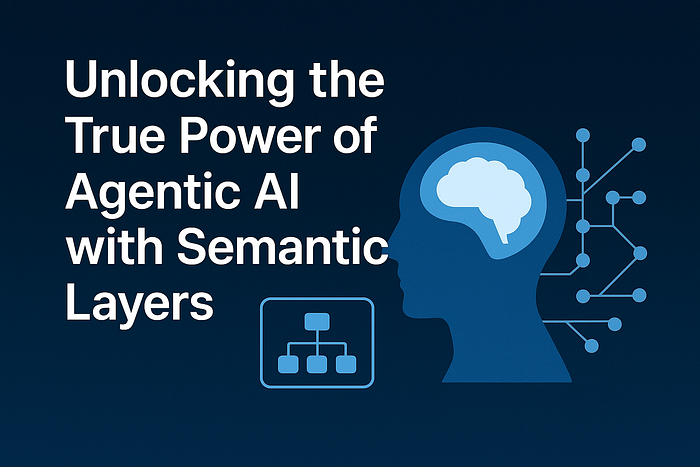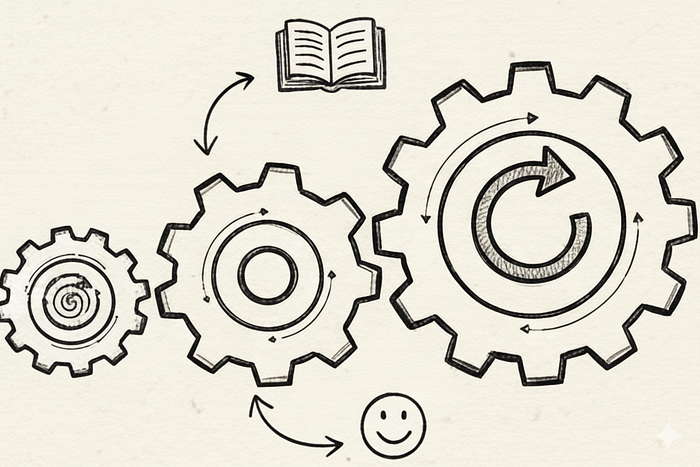Introduction to Agentic AI
Agentic AI, the new wave of autonomous, reasoning-driven artificial intelligence systems, represents a major leap in how we interact with data and automation. These systems don’t just follow commands; they analyze, plan, and adapt in real time. From orchestrating data pipelines to assisting analysts and business users in generating insights, agentic AI is quickly transforming the modern enterprise.
The Power of Semantic Layers
Yet for all their intelligence, these systems are only as effective as the data and context they understand. The secret ingredient that turns autonomous agents into truly strategic partners is something many organizations overlook: the semantic layer. A semantic layer brings structure, meaning, and business logic to data. It is the connective tissue that links raw technical assets to human concepts, creating a common language between AI systems, analysts, and decision-makers.
Why Semantic Layers Matter in Agentic AI
At the core of every agentic AI system is reasoning — the ability to make decisions based on complex relationships and objectives. But for reasoning to work, an AI agent must understand what it’s reasoning about. In most enterprises, data is fragmented across multiple systems, schemas, and definitions. “Revenue” might mean something slightly different in one department than another. Without a consistent semantic understanding, even the smartest AI agents can struggle to connect insights across domains.
The Value Multiplier: How Semantic Layers Elevate Agentic Systems
When agentic AI systems are built on top of a rich semantic foundation, their capabilities — and their value to the organization — expand exponentially. The benefits include:
1. Context-Aware Reasoning
A semantic layer allows AI agents to understand why certain actions or insights matter. Instead of blindly optimizing metrics, agents can reason through cause and effect based on business context.
2. Consistency Across the Organization
Semantic layers enforce shared definitions and relationships, ensuring that every agent, team, and system interprets data in the same way. This alignment reduces errors and confusion, enabling consistent decision-making across departments and use cases.
3. Human-AI Collaboration
Agentic AI becomes far more powerful when humans can interrogate and interpret its reasoning. Semantic layers make that possible. They create a shared vocabulary between humans and AI agents, allowing users to query data conversationally, understand AI explanations, and validate recommendations against familiar business logic.
4. Faster Development and Iteration
Because the semantic layer abstracts complexity, developers can build and deploy new agentic AI applications faster. Agents can access business-ready data without having to relearn database schemas or custom transformations each time.
5. Trust and Transparency
One of the biggest challenges in adopting agentic AI is trust. Business leaders often hesitate to rely on autonomous systems they can’t fully explain. Semantic layers improve explainability by grounding every AI-driven decision in recognizable business concepts.
From Automation to Intelligence
Most AI systems today automate tasks in so far as they process inputs and produce outputs efficiently. Agentic AI, however, represents a shift from automation to intelligence. It can plan, adapt, and collaborate. But for intelligence to be useful, it needs meaning and meaning for machines comes from semantics. By integrating semantic layers, organizations effectively give their AI systems a “mental model” of the business.
The Strategic Edge
Forward-thinking organizations are beginning to view the semantic layer as a strategic investment, one that powers a unified intelligence ecosystem. When semantic models are well-designed, they can be leveraged across multiple AI initiatives: data governance, analytics, reporting, and now agentic AI. This reusability compounds value. Each new AI agent built within the same semantic framework inherits the accumulated knowledge of the organization’s data landscape.
Looking Ahead
As agentic AI systems become more capable, their need for structured meaning will only grow. The next generation of intelligent agents will rely not only on large language models but also on semantic architectures that provide grounding and reliability. In this future, semantic layers won’t be an optional enhancement — they’ll be the backbone of truly intelligent automation.
Conclusion
The semantic layer is where human understanding meets machine intelligence. It’s the foundation that turns autonomous agents into partners in problem-solving, innovation, and strategy. Agentic AI may be the engine of transformation — but the semantic layer is the map that guides it. Together, they represent the next great leap in how organizations harness data to think, decide, and act with intelligence.
FAQs
- What is Agentic AI? Agentic AI refers to autonomous, reasoning-driven artificial intelligence systems that analyze, plan, and adapt in real time.
- What is a semantic layer? A semantic layer brings structure, meaning, and business logic to data, creating a common language between AI systems, analysts, and decision-makers.
- Why are semantic layers important in Agentic AI? Semantic layers are crucial because they provide the context and meaning necessary for AI agents to make informed decisions and collaborate effectively with humans.
- How do semantic layers benefit organizations? Semantic layers enable context-aware reasoning, consistency across the organization, human-AI collaboration, faster development and iteration, and trust and transparency in AI decision-making.
- What is the future of semantic layers in AI? As Agentic AI becomes more prevalent, semantic layers will become the backbone of truly intelligent automation, providing the structured meaning necessary for AI systems to operate effectively.











